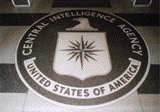 The latest al-Qaeda bomb plot targeting U.S. aircraft was unraveled from inside the terrorist group by operatives – including a double-agent – working on behalf of the CIA and its counterparts in Saudi Arabia and Yemen, said U.S. and Middle Eastern officials.
The latest al-Qaeda bomb plot targeting U.S. aircraft was unraveled from inside the terrorist group by operatives – including a double-agent – working on behalf of the CIA and its counterparts in Saudi Arabia and Yemen, said U.S. and Middle Eastern officials.
The Saudi service played a particularly important role in penetrating al-Qaeda’s affiliate in Yemen and recovering the explosive device, according to officials who described an elaborate espionage operation in which the CIA tracked the bomb’s movements for weeks and then killed suspected plotters in a drone strike after the device was seized.
Senior U.S. officials continued to withhold certain details, including the location and status of the individual – described by officials as a Saudi informant – who penetrated al-Qaeda posing as a willing suicide bomber then turned over the device to authorities after leaving Yemen.
But comments by White House counterterrorism adviser John O. Brennan and others made it clear that the involvement of the CIA and its partners went well beyond simply watching the bomb plot unfold.
“We’re confident that neither the device nor the intended user of this device posed a threat to us,” Brennan said in an interview on ABC’s Good Morning America program. “We had the device in our control and we were confident that it was not going to pose a threat to the American public.”
The emerging details help to illuminate the evolving tactics being employed by both sides in what U.S. officials have come to regard as the most critical counter-terrorism front.
The plot shows that al-Qaeda’s franchise in Yemen remains committed to mounting attacks against Western targets even after its most prominent advocate of such strikes, the American-born Anwar al-Awlaki, was killed in a drone strike last year.
The disruption of the threat also indicates that the CIA and other agencies have gained significant traction on their target two years after President Obama began deploying more spies, eavesdropping equipment and armed drones to the Arabian Peninsula.
CIA officials declined to comment on the mission. Other officials spoke on condition of anonymity, citing the sensitivity of intelligence operations.
A senior U.S. intelligence official said spy agencies were able to keep tabs on the location of the bomb, as well as those involved in plotting how it would be used, before it was intercepted in another country in the Middle East, thought to be Saudi Arabia.
“We know the route this thing took in terms of its movement,” the official said.
The device was described as an updated version of a design that al-Qaeda in the Arabian Peninsula, or AQAP, has used in a series of plots, including the attempt to blow up a Detroit-bound airliner on Christmas Day in 2009.
The U.S. intelligence official declined to discuss what he described as “the disposition of the individual involved” in transporting the bomb before it was seized. Other officials indicated that the bomb handler was cooperating with the CIA and Saudi intelligence services, and is in protective custody.
A former senior U.S. intelligence official familiar with recent operations against AQAP said that the Saudi intelligence service has furnished a steady stream of intelligence to the CIA.
“They’ve had someone on the inside of [AQAP] for some time,” the former official said. The Saudi source has provided intelligence on previous plots, including the tip that enabled authorities to disrupt al-Qaeda’s attempt to mail parcels packed with explosives to addresses in Chicago in 2010.
Efforts by the CIA and Saudi service to protect that source and enable him to remain in place make it unlikely that he was used to deliver the bomb, according to former officials who said it is more likely that a lower-ranking operative was used in that role.
As part of an expanding collaboration with the CIA, the Saudi spy service has taken advantage of long-standing informant networks and tribal relationships in Yemen, exploiting them for intelligence on an al-Qaeda franchise with numerous Saudis in its ranks. Among them is Ibrahim al-Asiri, the bomb maker suspected of designing the latest device.
Of dozens of AQAP fighters with Saudi backgrounds “at least five or eight of them are under cover” working for the Saudi service at any point in time, said a Middle Eastern official. “The Saudis have always had a network” of sources in Yemen, the official said, “now they are expanding its objectives.”
The deepening cooperation reflects the extent to which Saudi Arabia regards AQAP as a major security threat. The country’s chief counterterrorism official, Mohammed bin Nayef, narrowly survived an attempt on his life three years ago by an AQAP operative.
The CIA established a new drone base on the Arabian peninsula last year, and the National Security Agency has deployed officers and equipment to monitor the cell phone and e-mail communications of AQAP.
Both agencies work alongside the U.S. Joint Special Operations Command, an elite military force that operates its own fleet of armed drones and recently resumed providing trainers to Yemen’s counter-terrorism units.
The pace of U.S. airstrikes has quickened dramatically this year, according to data compiled by The Long War Journal Web site. Of the 31 U.S. airstrikes in Yemen since 2002, 14 of them have come within the past five months.
The most recent killed an alleged operations planner wanted in connection with the attack on the U.S.S. Cole warship in Yemen in 2000. U.S. officials said that Fahd al-Quso was likely involved in directing the bomb plot but that the strike was ordered because of his larger role in AQAP.
{Washington Post/Matzav.com Newscenter}











